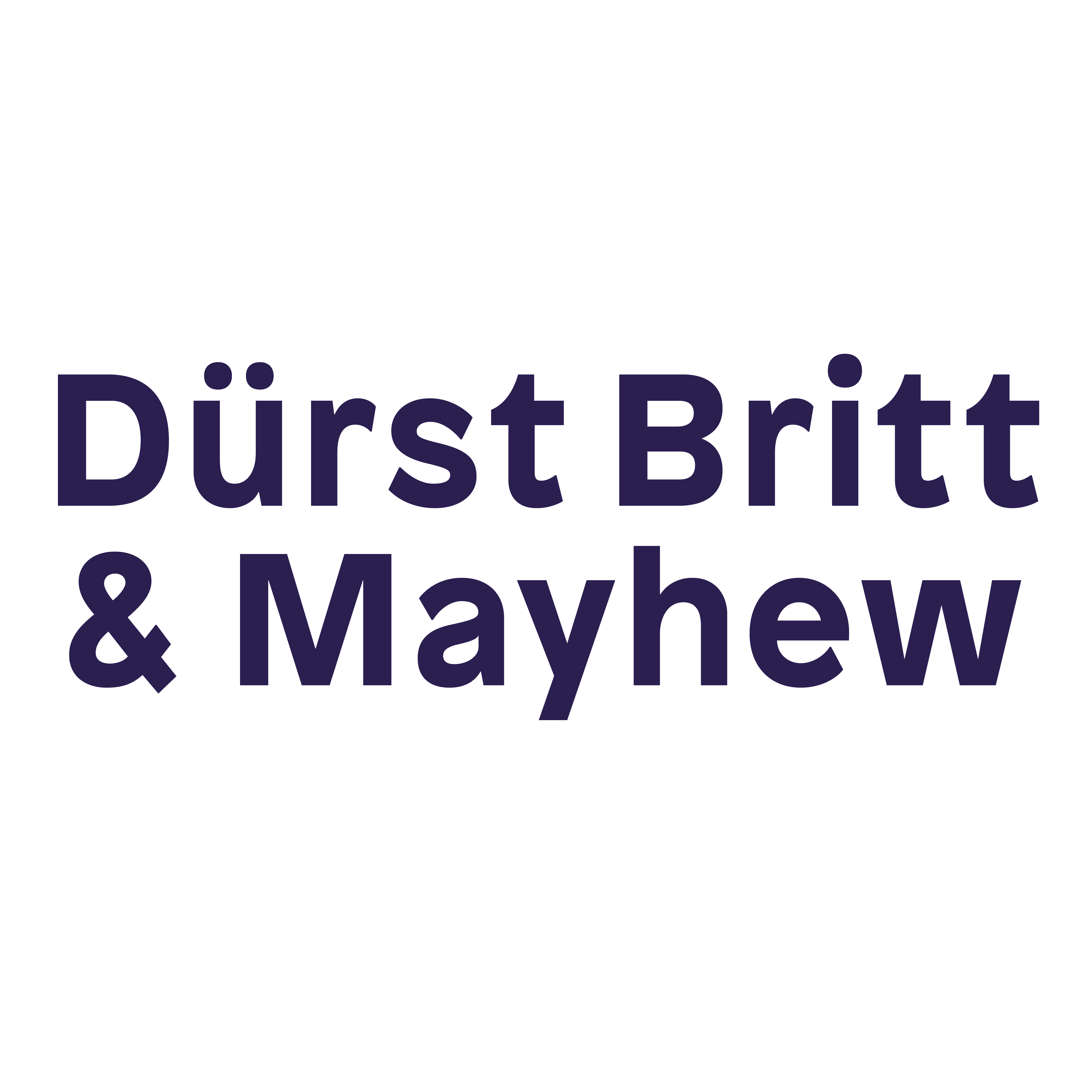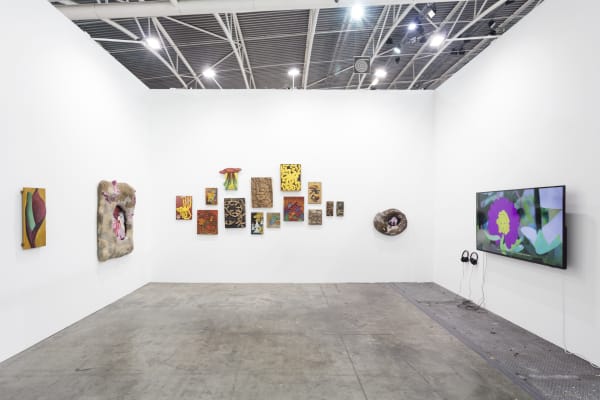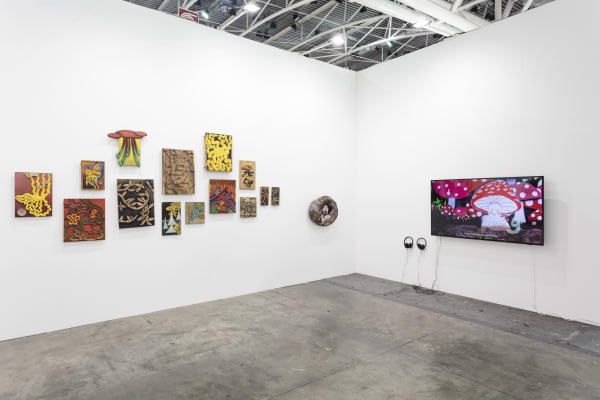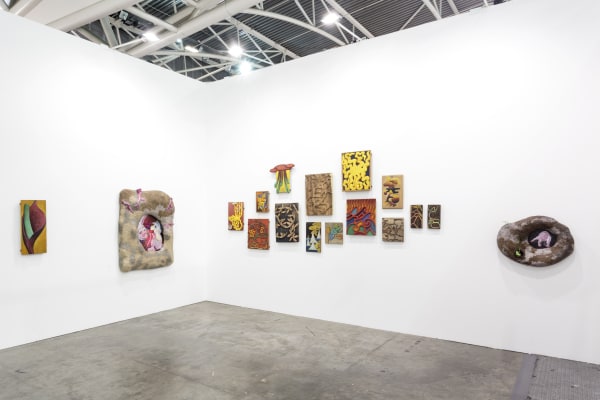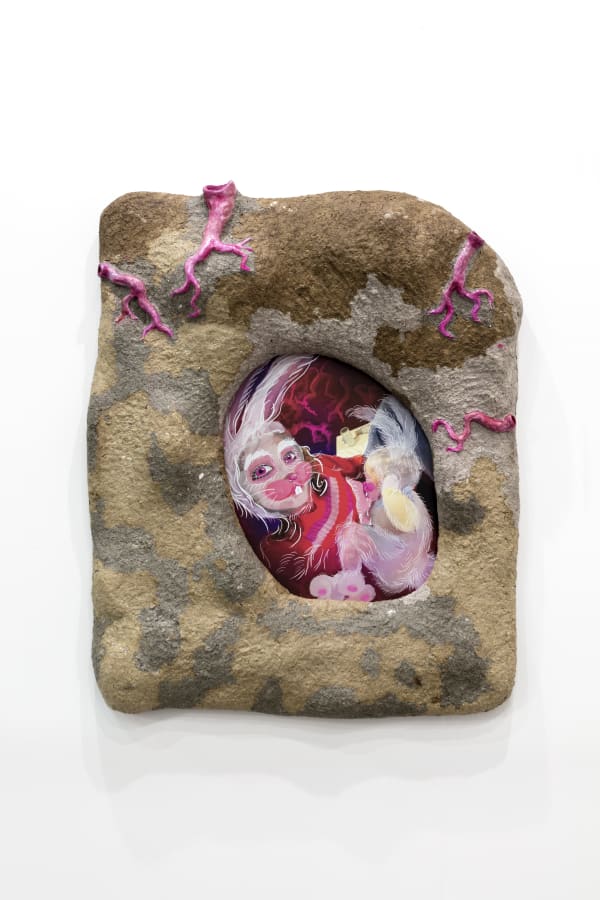At Artissima 2024 Dürst Britt & Mayhew will present a dialogue between Dutch artist Puck Verkade and Mexican artist Alejandra Venegas.
Puck Verkade's latest video installation ‘Uprooted’ recently premiered at the 8th Yokohama Triennial ‘Wild grass: Our Lives’ in Japan. Climate change and environmental destruction are affecting the future and survival of human beings. Not only is the natural world beyond our control, but we ourselves are creating a natural environment that seems unsuitable for us. The clue to human survival then, should lie not in altering nature, but rather in emulating it. In this installation that brings together various techniques such as performance, stop-motion and rotoscoping animation, lyrical narration and musical composition, the artist focuses on the nature of plants—how various species coexist on the same soil, flexibly change their forms, and live in codependency. Like so, if we can accept the ever-changing world and break free from our rigid ways of thinking and old-fashioned social structures, perhaps that is when the humanoid protagonist in this video will find a safe haven for the first time.
The video has been presented in Yokohama as an immersive audiovisual set amidst a vibrant sculptural installation recalling the flowers in the video. For the European debut of the piece at Artissima, Verkade's installation will be surrounded by a selection of wall mounted floral wood carvings by Alejandra Venegas.
Alejandra Venegas hand carves landscape scenes and natural motives from various sorts of wood native to Mexico, after which she colours them with gouache or oil. Uniting the natural, warm tones of the wood with stridently bright shades is a contrast she actively seeks for. Incorporating the natural irregularities of the wood makes it much more than just a panel to paint on and gives the work a definite sculptural character. For Venegas, these works have therefore become a meeting place between painting, sculpture and drawing, but also between nature and culture, the exterior and the interior.
The theme of Venegas’ pieces is linked to her vision of natural phenomena, the climate and the seasonality of the upper zone of Xochimilco (on the southern outskirts of Mexico City), where she lives and works. Throughout her outings around Xochimilco, Venegas carefully observes the language of the plants and animals that surround her and as part of these observations, the motifs of her reliefs emerge: seeds that sprout from the earth, plants and flowers, grasshoppers and other animals that surround the area, rain, the sun and their influence on the transformation of the landscape. But she also uses certain ornamental figures such as the spiral that symbolizes expansion and growth. Venegas’s pieces present us with scenes that make us gaze longingly at an idea of nature that is disappearing from urban life, but which, if we look closely, is still there.
